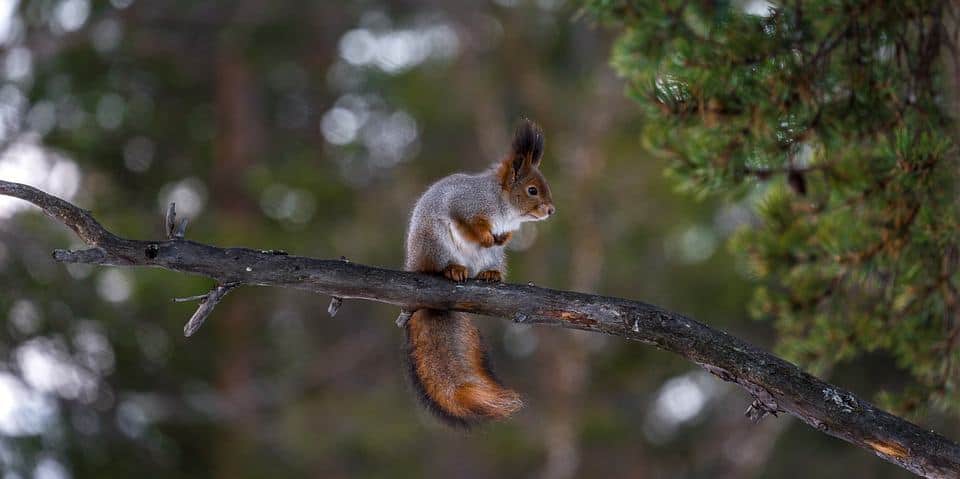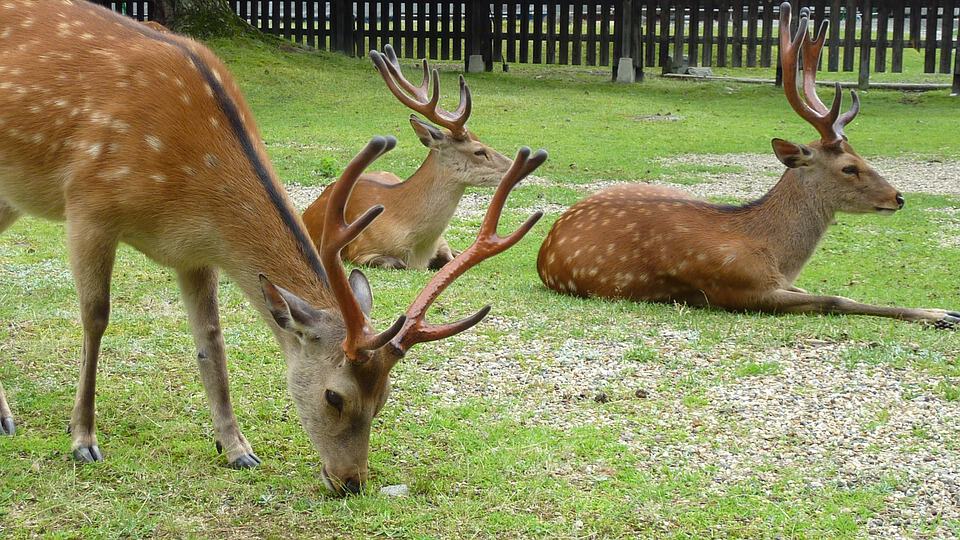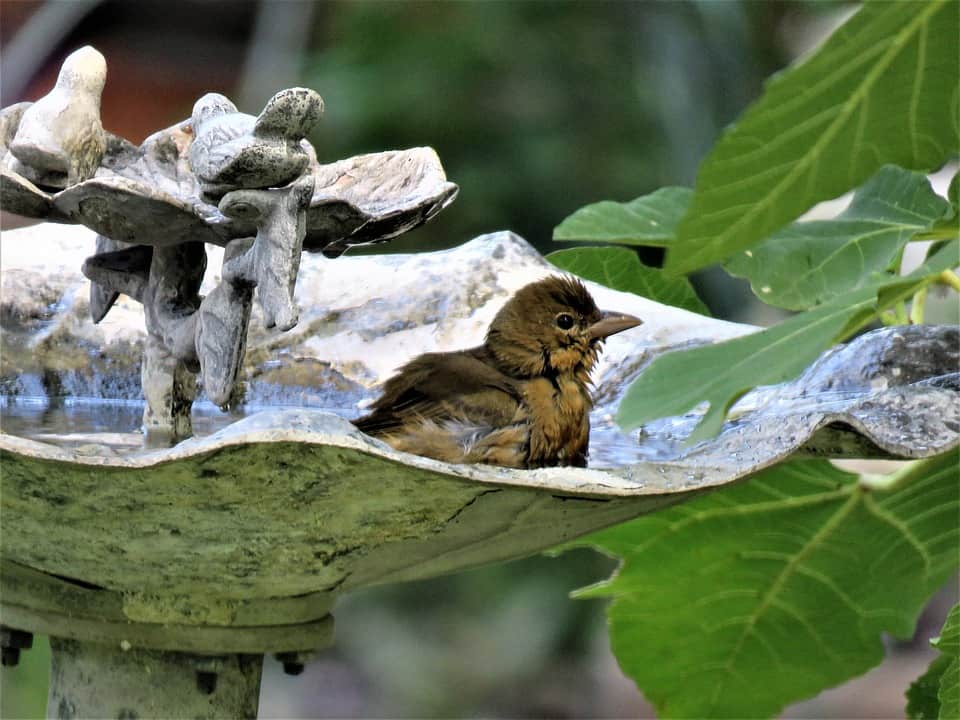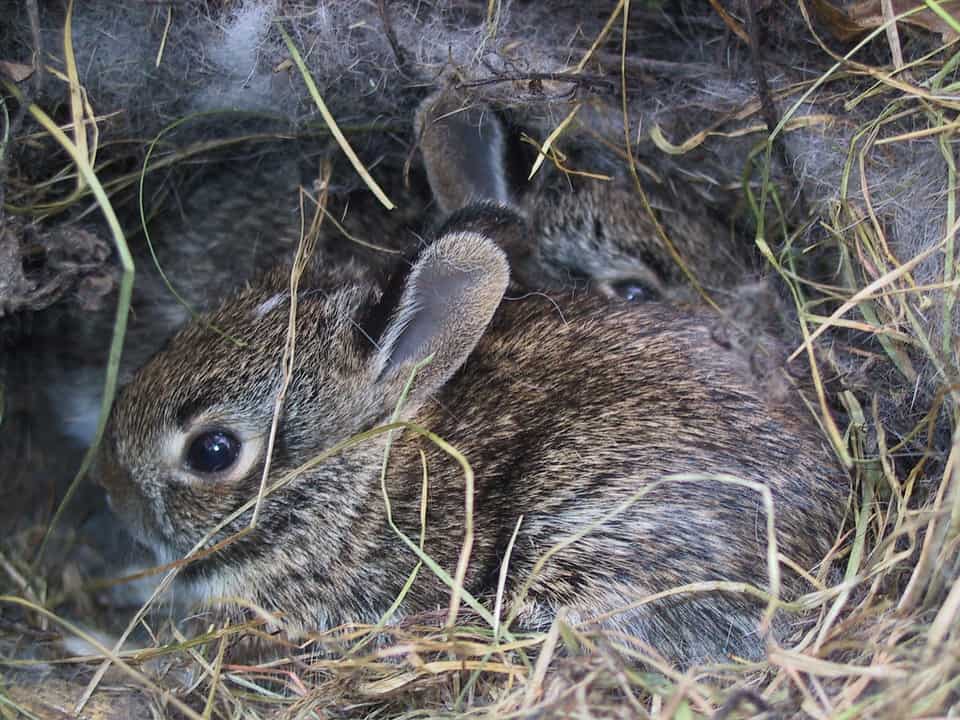
Do you want to draw flocks of birds, butterflies, and other scurrying wildlife to your backyard? Even city dwellers can turn their yards into a wildlife refuge by offering the four things all animals search for — food, water, shelter and room to raise their young. Here are some dos and don’ts for creating a safe, beautiful and educational backyard wildlife sanctuary.
Using food to attract wildlife to your backyard

Animals are always attracted to food, especially a consistent supply of their favorite noshes. Providing a sustainable habitat for wildlife begins with the kind of food options you provide. Here are some dos and don’ts on using food to make your yard a safe place for wildlife.
Do:
Use native plants in your garden, either as landscaping or throughout your yard. Native plants can thrive in your climate’s specific growing conditions, and are are often good sources of natural food for your local wildlife populations.
- Try to grow a variety of plants that bloom during different seasons so wildlife can take advantage of food year round. Even consider plants that offer a variety of purposes — more than just physical nourishment — so that the wildlife can rely on your yard for sustenance in multiple ways.
- Sow plants that provide essentials for the wildlife diet, such as seeds, nuts, greens, pollen, fruits and berries.
- Use specific plants to attract insects that a variety of wild creatures like in their diet. Both plants and feeders can attract these alternate natural food sources.
- Think about what kinds of animals you want to attract (and who you’d rather not have visiting) and provide those types of food sources. For example, if you want your backyard to draw:
- Squirrels: These furry scampers love berries and nuts. You can also hang corncobs or scatter corn seed on the ground beneath trees.
- Rabbits: These cute little hoppers enjoy dining on clover, lettuce and carrots. You can plant a garden just to attract rabbits, or simply use their favorite green foliage in your flowerbeds or along fence lines.
- Deer: These elegant animals enjoy snacking on wax myrtle, blackberry and spicebush.
- Chipmunks: This smaller cousin to the squirrel also enjoys berries and nuts, but they will also eat insects, worms and bird eggs.
- Butterflies and Bees: Many species of these beautiful insects are in decline, so planting native plants with red, yellow, orange, pink and purple colors will help them thrive.
- Birds: Different kinds of birds enjoy different kinds of plants, but seeds and nuts from native plants provide a solid staple for those in your area.
Don’t:
- Leave out kitchen scraps, boldly-pungent scents or meats that might attract the kind of wildlife you may want to avoid, like rats and skunks.
- Use pesticides and other chemicals in your yard that might hurt, injure or deter animals or contaminate the insects they eat.
- Feed animals any seeds that contain capsaicin or other hot or peppery flavors.
- Leave your trash uncovered or bring out your bins the night before trash pick-up, especially if you’re concerned about certain species that might endanger your household animals. Raccoons, skunks and bears are typically harmless, but can cause quite a calamity if they come face-to-face with your dog or cat.
- Be too concerned if your backyard is fenced in. While this may prevent deer and larger animals from coming in, smaller animals and birds will still have access. If you want deer to visit, try planting the foliage they enjoy snacking on along your fence line.
Give critters a place to call home

All animals — even humans — need shelter. Building dense, natural and secure shelters can appeal to all kinds of wildlife. Remember, the safer the animals feel, the more likely they’ll use your shelter, and maybe even stick around for a while. Here are some dos and don’ts for creating shelters that will sustain wildlife.
Do:
- Plant evergreen trees and shrubs to offer natural shelter for wildlife year-round.
- Create brush piles with a solid foundation and a well-insulated brush cover.
- Think about what kinds of shelter the animals you want to visit (and stay) will need in order to avoid predators and stay dry and warm during storms and harsh conditions.
Don’t:
- Seal off or move around areas that already may be used for shelter without completely examining the area for signs of life.
- Create a shelter with flaws that could leave the animals at risk for capture by a predator.
- Let your domestic animals invade these spaces. Keep your cats indoors, and train your dogs to stay away from the shelters.
Provide the most essential need: water

All animals need clean water sources for drinking, and many also are drawn to sources for bathing. You don’t need a large pond to attract and sustain wildlife, so long as you are strategic about the water supply you offer and maintain. Here are several dos and don’ts for providing water for animals in your backyard.
Do:
- Use birdbaths at various widths, depths and heights, as they appeal to birds, squirrels, deer and other animals.
- Place your water near shelter, nests and food sources to create an inviting habitat that the various wildlife creatures you want to see will spend more time in.
- Create areas to collect natural rain water like ponds.
- Use moving water when you can — wildlife will be drawn to the sounds of water sources. Install fountains or add pumps to still water sources.
- Put light foliage in ponds to help smaller animals get in and out.
Don’t:
- Let water get too stagnant or dirty, as it can grow harmful bacteria that deters animals.
- Put salt licks, hummingbird feeders or other flavored animal attractors near water sources to keep it fresh.
- Allow animals to drink out of your swimming pool, hot tub or other recreational water sources that may have chemicals in them.
- Let too many hot summer days go by without refilling your water sources.
Attract wildlife families

One of the most amazing wonders of wildlife watching is seeing a baby bird fly or a tiny squirrel emerge for the first time. You’ll know your wildlife habitat is at its peak when your critters start having offspring of their own. That means you’ve created a safe, secure home with plenty of food and water. Here are a few additional dos and don’ts when it comes to encouraging wildlife to start families in your backyard habitat.
Do:
- Maintain the food and water sources on a regular basis so wildlife animals feel secure in your habitat.
- Think about the unique needs of the kinds of wild animals you want raising families in your backyard. For instance:
- Squirrels: These little creatures don’t like being out in the open. They’ll want to raise their families in trees with easily scalable bark that also provide food.
- Rabbits: These small animals feel safest raising their young in brush piles and scampering in tall, weedy grasses. Let an area of your yard grow tall and wild to encourage breeding.
- Deer: These skittish mammals are unlikely to live full-time in your backyard, but if your yard is adjacent to a forest or woods and your habitat is inviting, they’ll likely bring their young into your yard to forage.
- Chipmunks: These woodland creatures like to stay low and will find brush piles and thick vegetation the ideal environment for storing food during the winter and raising families in the spring.
- Birds: These airborne animals will want to build nests on branches and in trees, but also find safe and warm birdhouses and other structures appealing.
Don’t:
- Hang homemade shelters or feeders too close to windows where birds and small mammals feel unsafe.
- Plant high grass or food foliage too close to walkways, as animals won’t have babies or raise their young if they feel uncertain about the safety of food sources.
- Get too upset if animals eat the eggs or young of other animals. Creating a backyard habitat is about creating a natural environment — the circle of life will happen.
Creating a wildlife habitat in your backyard will not only help the environment, it will also provide educational benefits to your whole family. Both children and adults are often in awe of nature; you can teach young and old alike about the importance of conservation, safety and the interconnectedness of life. Plus, if your children and teens are part of the planning and implementation of your backyard wilderness, they learn math, science, biology, time management and responsibility. Inviting creatures into your backyard isn’t just fun, it’s a truly mutually beneficial relationship for animals and humans alike.

 United States
United States Canada
Canada